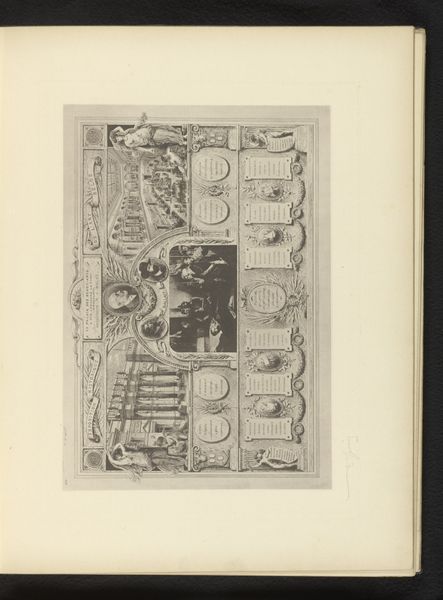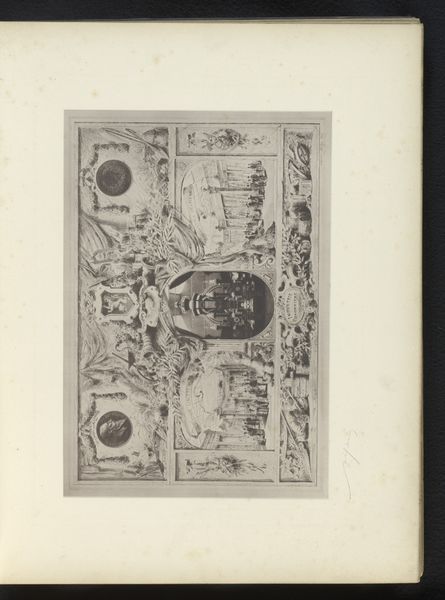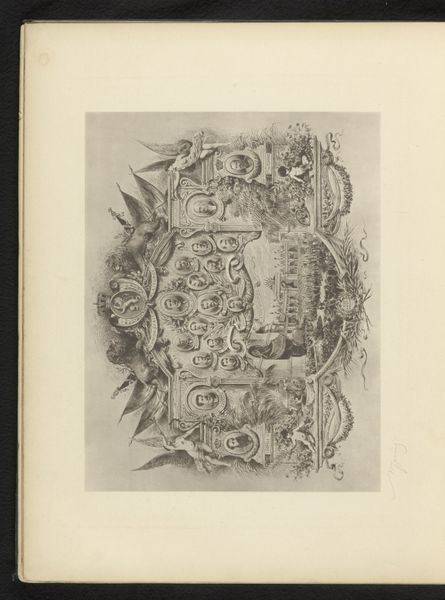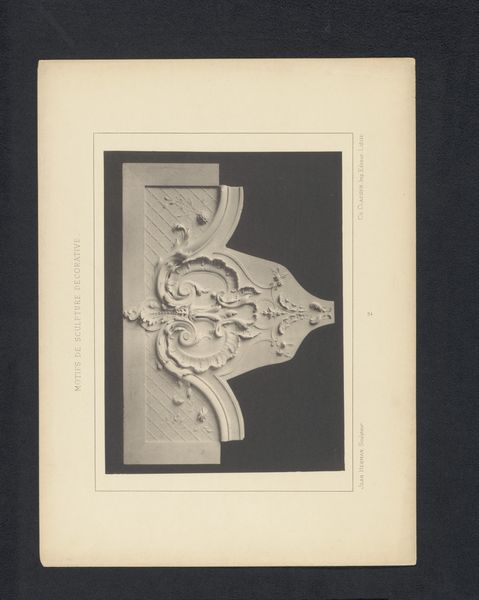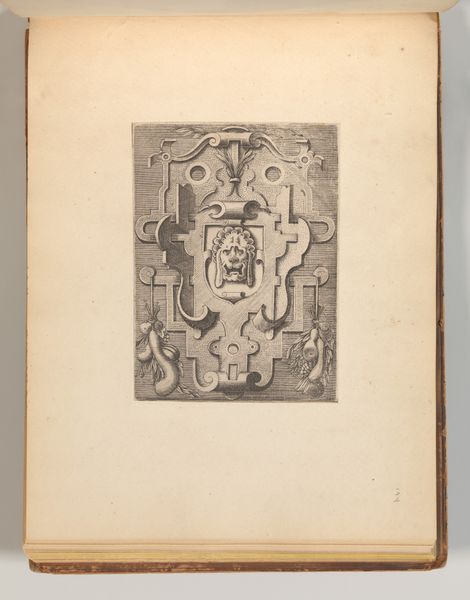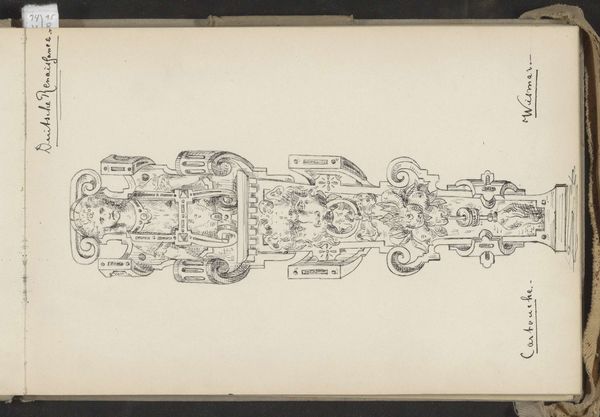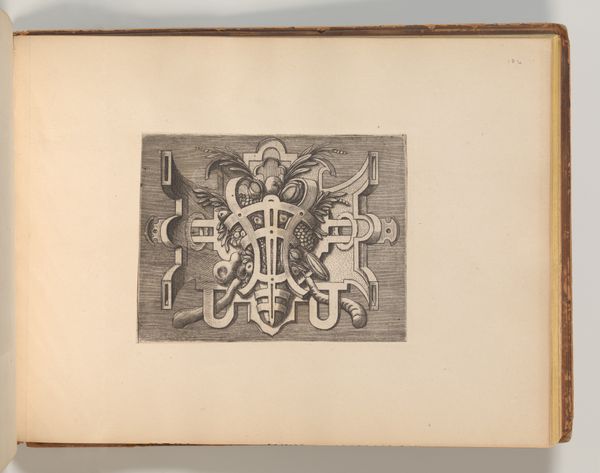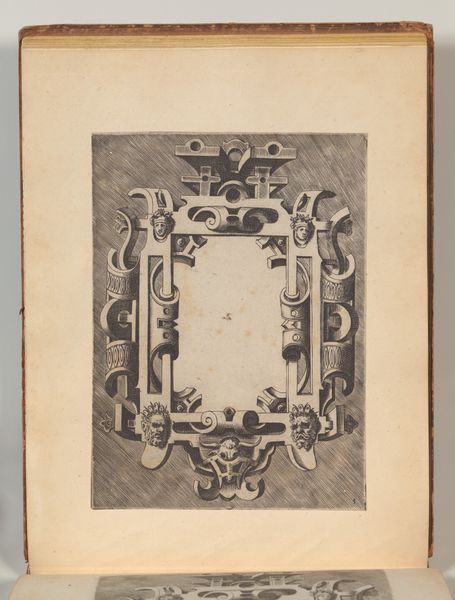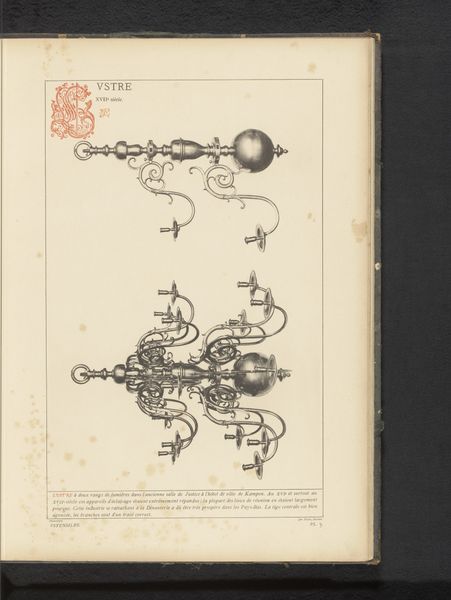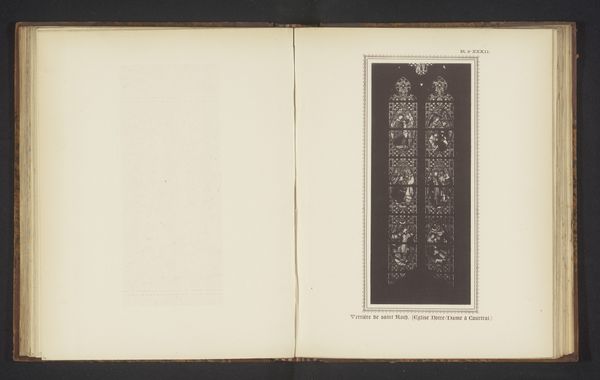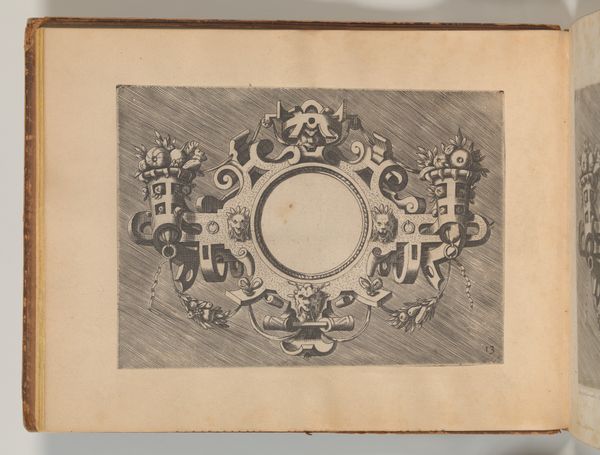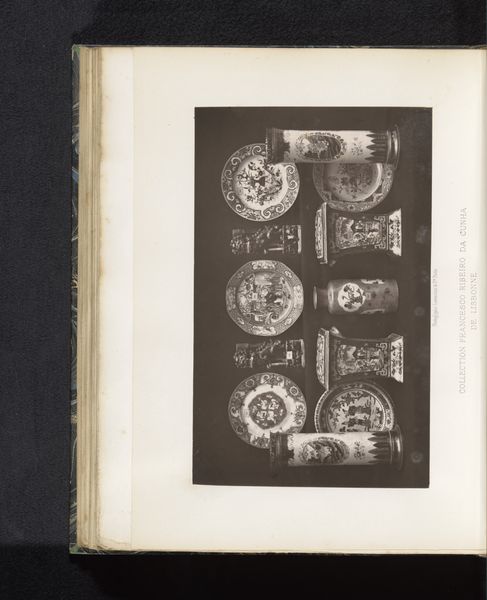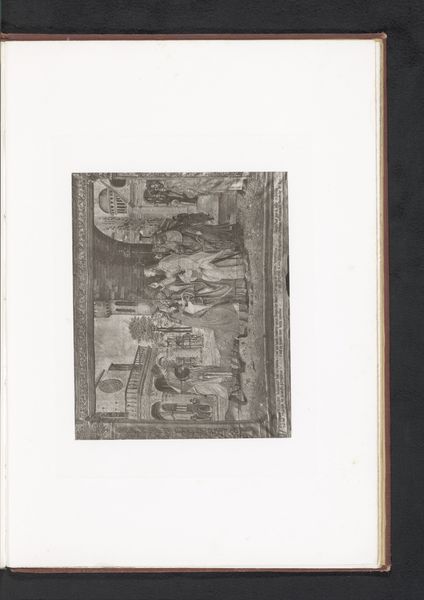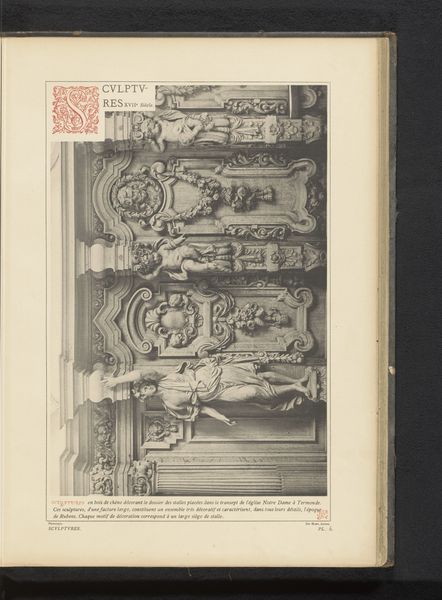
Reproductie van een gravure van de Exposition Nationale van 1880 in Brussel, omringd door portretten van onder andere Léopold I en Léopold II van België, door Armand Heins 1881 - 1882
0:00
0:00
print, engraving
#
portrait
# print
#
line
#
history-painting
#
academic-art
#
engraving
Dimensions: height 236 mm, width 298 mm
Copyright: Rijks Museum: Open Domain
Editor: This engraving by Armand Heins, dating from 1881-1882, depicts the Exposition Nationale of 1880 in Brussels, framed by portraits. The whole thing has a formal, commemorative feel. How do you interpret this work? Curator: I see a fascinating confluence of production methods and social positioning. This isn't simply a representation of an exposition; it’s a manufactured image designed for consumption. The very act of creating a print – a reproducible image – speaks to the desire to disseminate and solidify a specific narrative about Belgian identity and its leadership. Editor: So, the material – the print itself – is key? Curator: Precisely! Consider the labour involved: the engraver meticulously translating the scene and portraits onto a plate, allowing for mass production. This accessibility meant more people could ‘own’ a piece of the national narrative. And, who would be buying such a print? Likely the burgeoning middle class, eager to participate in displays of national pride and reinforce the social order represented by the monarchy. Editor: That makes sense. I was initially focused on the visual aspects of the portraits and the exposition view, but I hadn't considered the role of printmaking itself. Curator: It encourages us to question who benefits from the production and distribution of these images, and whose stories are being elevated. We have to remember the engraving, in this case, it’s a product – tied to economic forces and used to legitimize power. What narratives would have been included, and excluded? Editor: It's fascinating to think about it not just as an image, but as a product shaped by its time. Thanks, that’s given me a whole new way to look at it. Curator: Likewise! Reflecting on the purpose of art from a perspective grounded in both production and its accessibility broadens the discussion meaningfully.
Comments
No comments
Be the first to comment and join the conversation on the ultimate creative platform.
